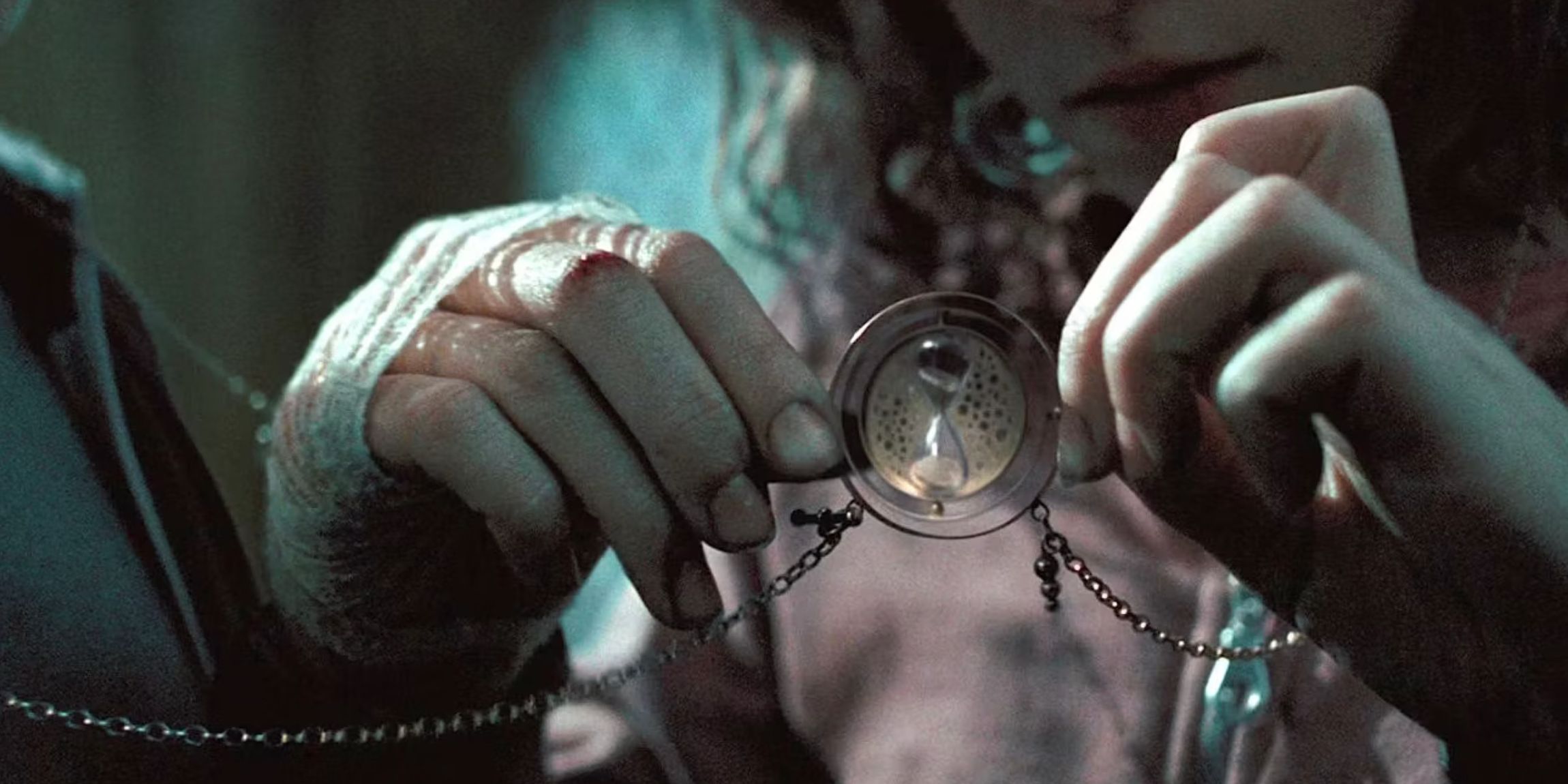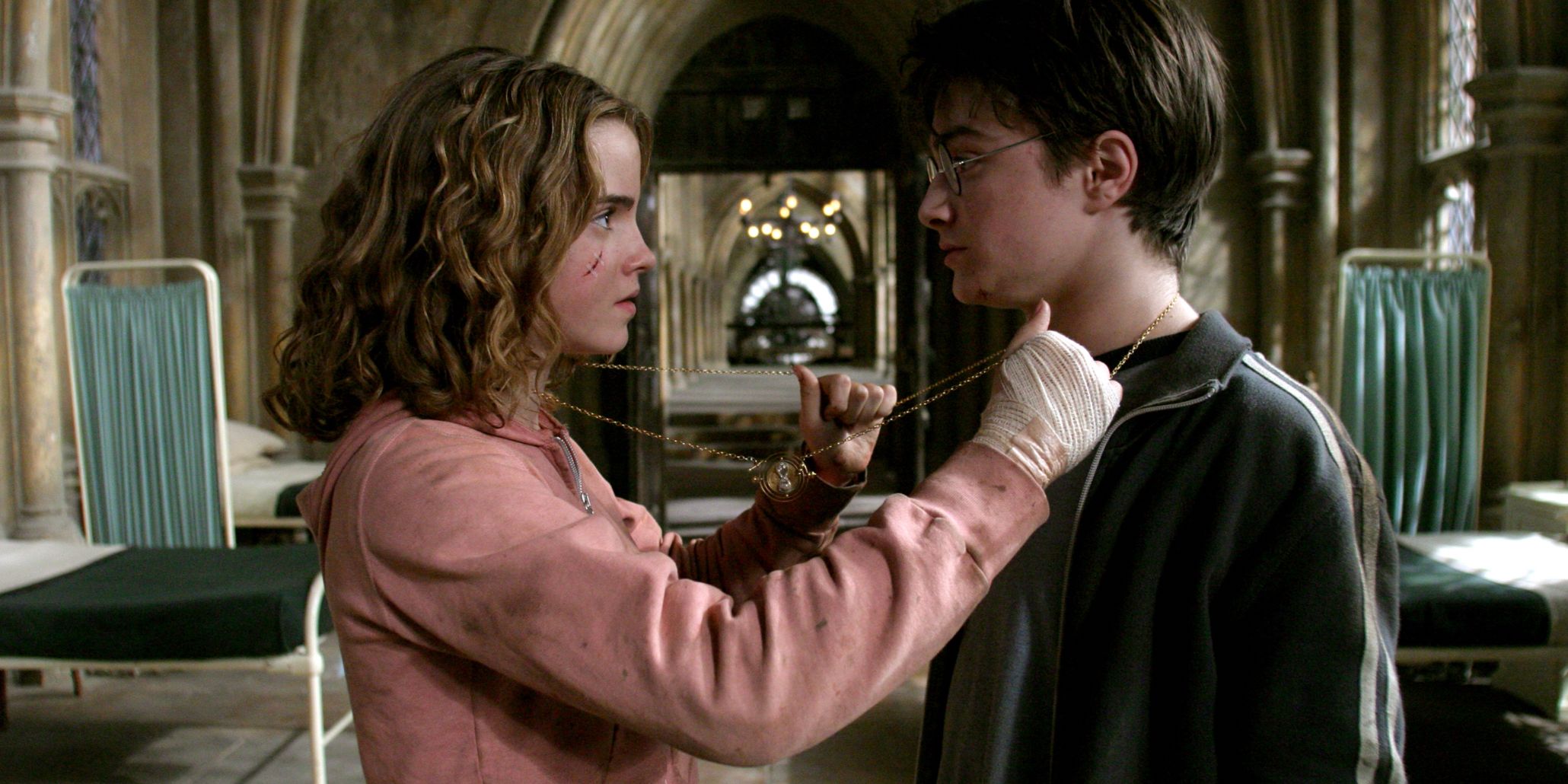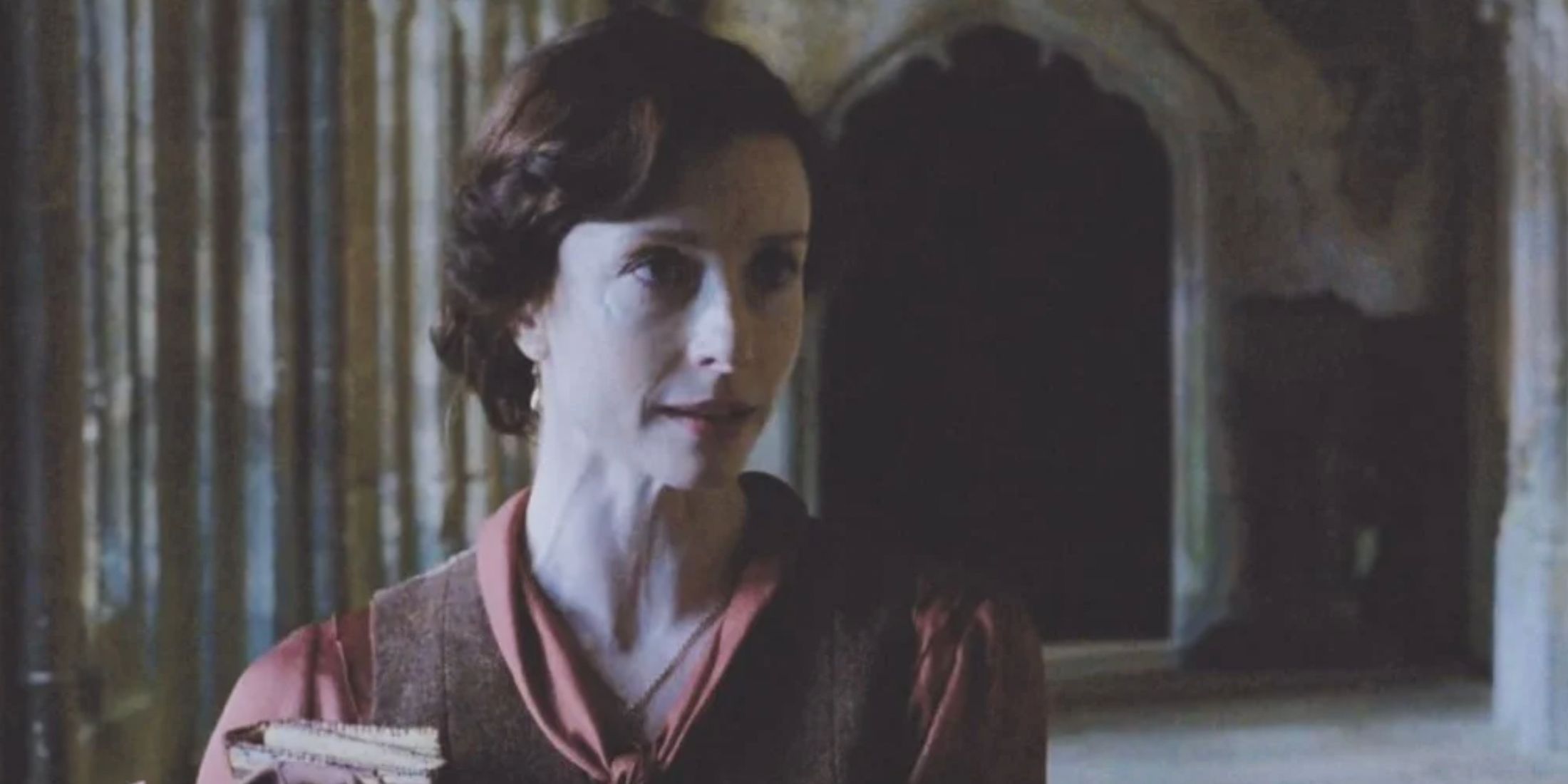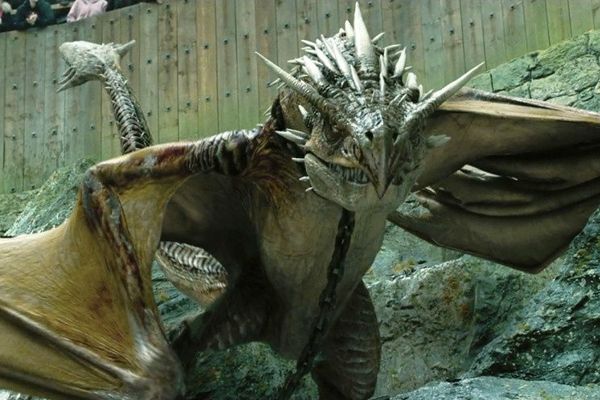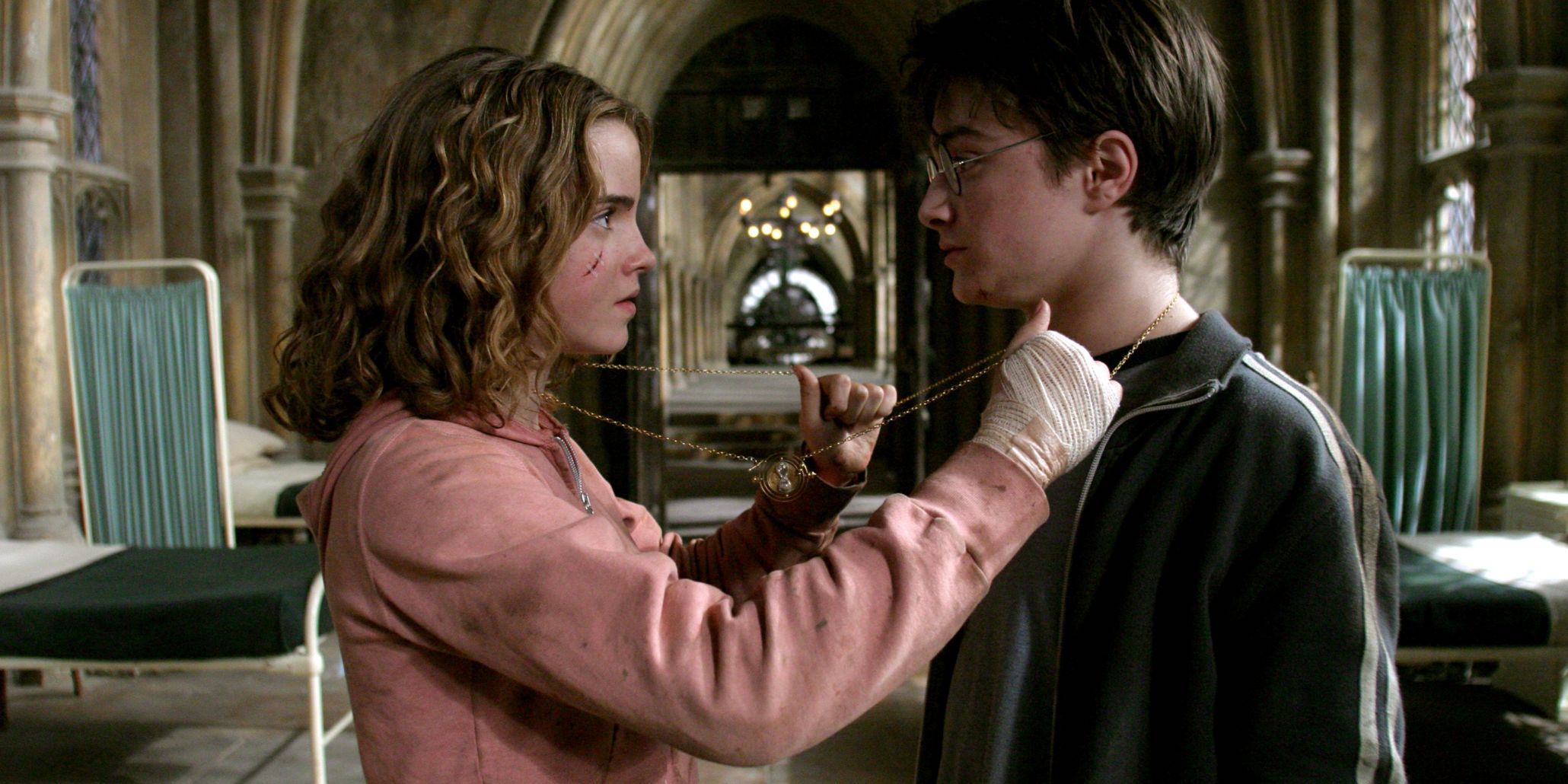
Unraveling The Secrets of Time-Turners

Unravel the mysteries of Harry Potter's rare and powerful magical object, the time-turner Discover how it's used in the story and why it's not commonly found elsewhere
Magical objects in the Harry Potter franchise are abundant, but none are quite as fascinating as the time-turner. While some elements of magic in J.K. Rowling's world have been borrowed from existing stories, the time-turner is entirely unique to her work. Rarely featured, but always impactful, time-turners have the power to drastically alter the course of the story. What sets them apart from other time-travel devices is their complexity: within the Harry Potter universe, there are multiple types of time-turners and strict rules surrounding their use. First introduced in Harry Potter and the Prisoner of Azkaban, the time-turner resurfaces in Harry Potter and the Cursed Child as a crucial plot device.
What Is A Time-Turner?
The time-turner is a necklace-like device that enables witches and wizards to travel back in time. It features an hourglass attached to a chain, which serves as a guide for the user to specify the particular time frame they wish to revisit.
Using an hour reversal charm, the wearer of the time-turner must flip the hourglass the number of times equivalent to the hours they want to go back in time. However, it is highly cautioned for individuals not to exceed five hours in the past due to the potential consequences of altering future events, creating paradoxes, or even forming a different timeline. In the wizarding world, time magic poses significant risks.
How Is The Time-Turner Used In The Story?
In the Harry Potter series, Time-turners are a rare magical item that is heavily regulated by the Ministry of Magic. Introduced in Harry Potter and the Prisoner of Azkaban, Hermione Granger uses one to take extra courses during her third year at Hogwarts School of Witchcraft and Wizardry. However, she must keep its use a secret and only use it for class as per the instructions of Professors Minerva McGonagall and Albus Dumbledore. Despite this, Hermione breaks the rule with Dumbledore's permission and uses the time-turner to save Sirius Black's life. Together with Harry, they go back a few hours to prevent the authorities from apprehending Sirius and to save Buckbeak the hippogriff from execution. By using the time-turner only for those specific events and catching up to the moment they first activated it, they successfully avoid creating a time loop.
After the defeat of Voldemort, one of his Death Eaters discovered a way to create a "true time-turner," which was not subject to the same limitations imposed by the Ministry of Magic. Unlike traditional time-turners, a true time-turner could transport a witch or wizard back in time as far as they desired and allowed them to stay in the past for an indefinite period. The use of a true time-turner was believed to be without consequences, but when Harry Potter and Draco Malfoy's children got hold of it, they attempted to alter the past, resulting in an alternate timeline that their parents had to rectify.
To prevent any potential complications, the use of time-turners is heavily regulated and only authorized individuals approved by the Ministry of Magic are allowed to use them. The Ministry takes necessary precautions to prevent any time paradoxes, erasure of one's existence or even the mental instability that could arise from encountering one's future self. Hermione warns Harry about these risks when he questions her decision to keep their time-turner use a secret.
The overuse of time-turners can cause the user to age prematurely, as evidenced by Hermione's use to attend all of her classes in her third year. Even a few extra hours a week can add up, and over time, the user could add years to their life. However, the scarcity of time-turners in the Harry Potter franchise is due in part to the destruction of the Ministry of Magic's supply by Harry and his friends during their ill-fated mission to rescue Sirius Black. The resulting chaos caused the entire supply to become trapped in a perpetual loop, rendering them useless.
Speculations around Minerva McGonagall wearing a time-turner in a deleted scene from Fantastic Beasts: The Crimes Of Grindewald have been circulating among fans. While the chain of her necklace resembles the time-turner design, the events of the movie take place long before the Harry Potter books and movies. However, if McGonagall had her own experience with time-turners, it could explain her willingness to help Hermione Granger use one for her studies. Nevertheless, there is no solid evidence to support this theory. Additionally, it remains unclear whether other wizarding communities around the world have their own time-turners or similar magical objects, as the Ministry of Magic only governs the magical community of Great Britain. It is possible that time-turners are in use in other areas of the Harry Potter universe outside of the Ministry’s jurisdiction.
